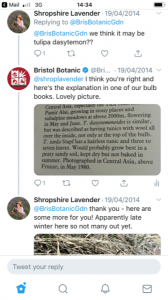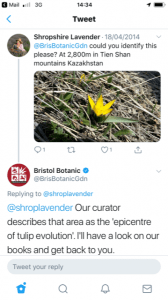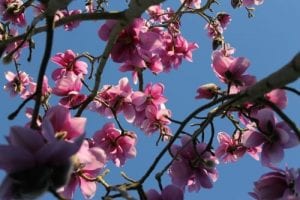By Andy Winfield

Media has changed dramatically in recent years, we’re inundated with news of the world and images of the lives of people we don’t know promoting lifestyles that are unattainable for most of us. This can lead to a slump in self-worth but nevertheless an irresistible urge to keep looking at the unrelenting sea of information. Social media is unavoidable today; some of you may be reading this through a social media app, and undoubtably a high percentage of you will have one or more accounts with a platform or two. It is said that on average users worldwide spend over two hours a day on social media; this will continue to be an upward trend and communicating this way has become the norm for many. Whatever anyone thinks about social media, it is here to stay. There has been much written about the negative effects, fear of missing out, peer pressure, trolling and spread of misinformation to name a few, and while these effects are undeniable, I think that social media can be a place of inspiration and discovery.
Our mission statement in the Garden is to educate, communicate and conserve, and was conceived when we moved from Bracken Hill to The Holmes in 2005. These words influence everything we do here, and the advent of social media seemed a perfect fit; so we decided to set up accounts in 2012, starting with Twitter and Facebook using our mission statement as a guideline and posting educational ditties about plants.

 As time went on, we discovered the fellow worldwide community of plant nerds like us is vast and we learned so much about the way others live and enjoy plants, from Pakistan to Poland. One of my favourite moments was when someone sent us a tweet from the mountains of Kazakhstan asking if we could identify a tulip that they’d seen up there; we were able to get our books out and confirm the correct species for them while they were standing next to it. On another occasion a tweet about monkey puzzle trees, Araucaria araucana, prompted a photograph from a remote Patagonian hut of these primitive plants in their natural habitat. Modifying your timeline on Twitter will bring your own experience; there is a wonderful hashtag called #wildflowerhour where, for an hour at 8pm every Sunday, users post pictures of any wildflowers they’ve seen the previous week; it’s a delight. Using #plants will on its own remove the opinionated aggression seen elsewhere and filter the good green stuff from around the world onto your device.
As time went on, we discovered the fellow worldwide community of plant nerds like us is vast and we learned so much about the way others live and enjoy plants, from Pakistan to Poland. One of my favourite moments was when someone sent us a tweet from the mountains of Kazakhstan asking if we could identify a tulip that they’d seen up there; we were able to get our books out and confirm the correct species for them while they were standing next to it. On another occasion a tweet about monkey puzzle trees, Araucaria araucana, prompted a photograph from a remote Patagonian hut of these primitive plants in their natural habitat. Modifying your timeline on Twitter will bring your own experience; there is a wonderful hashtag called #wildflowerhour where, for an hour at 8pm every Sunday, users post pictures of any wildflowers they’ve seen the previous week; it’s a delight. Using #plants will on its own remove the opinionated aggression seen elsewhere and filter the good green stuff from around the world onto your device.
Facebook has become very useful to us for promoting events and courses and sharing news and articles, it attracts more people every month than our website. If a course is under-booked, we can post an advert in Facebook and the numbers will go up; we know there are people out there who would enjoy doing a particular workshop and Facebook has given us a way to reach them.

In 2015 we set up an Instagram account which has become an important way to share the seasonal changes in the Garden. The Instagram age has created nature lovers and people who are on the look out for beautiful things, I see it every day on my way to and from work. If the sun is rising in spring then commuters stop to look at it and take a photograph; in the past I’m sure that didn’t happen, most people kept their heads down and continued the trudge to work. We’ve noticed a big demographic change in the Garden since Instagram was launched in 2010. When I started at the Botanic Garden in 2001 the main visitors were usually retired people who had discovered plants later in life, it was unusual to see anyone under 50ish visiting. Today younger people are coming to the Garden in large numbers as well, and they’re taking magnificent images which they post to their Instagram. If you were to search University of Bristol Botanic Garden as a location in your Instagram app, you’ll see what I mean. Changing our demographic was something we puzzled over long and hard and tried a few things which failed, but a rise of interest in plants and a platform to document them has solved a dilemma we thought was beyond us.
Instagram can bring surprises as well. Every now and then its possible to stumble on an account of a life in a place so removed from yours, people enjoying nature with their dogs in swampy USA, documenting Chilean native plants in a their garden near the Valdivian temperate rainforest or an orchid enthusiast living in the Eastern Highlands of Papua New Guinea sharing his wonderful orchid garden.
So, while it’s true that social media can have a negative effect, we’ve found a great community of plant lovers, allotment growers, nature photographers and people who just enjoy the outdoors; just set your feed to #plants and you will have a constant stream of green goodness!

